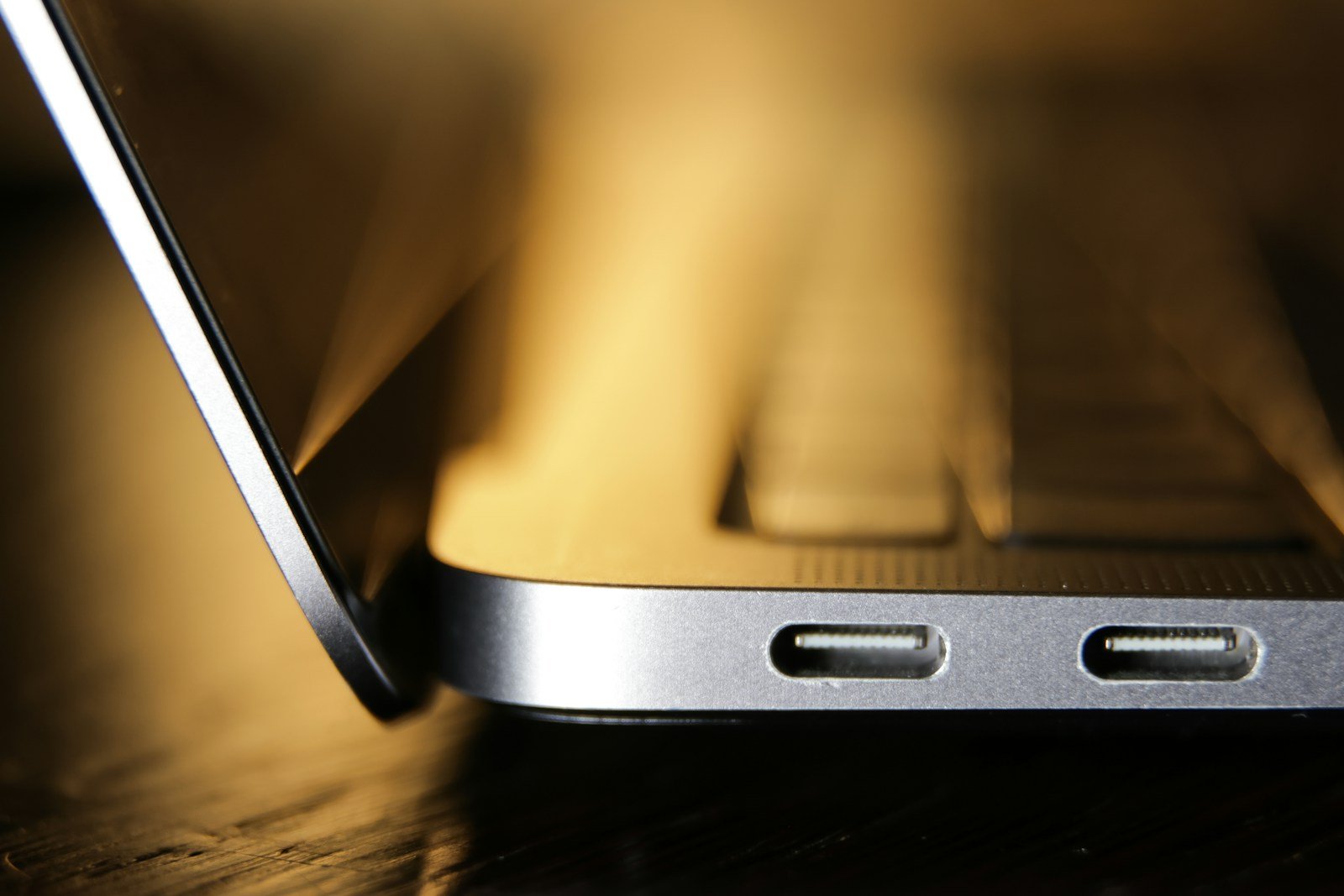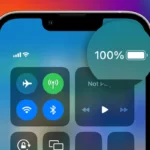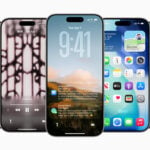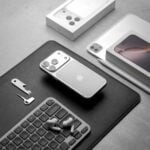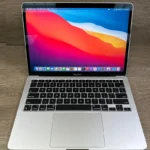Is your MacBook Pro refusing to charge? This common issue can be frustrating, but there are several steps you can take to fix it. Most charging problems stem from faulty hardware, software glitches, or power management settings that can be easily resolved.
First, check your charging cable and power adapter for any visible damage. Make sure all connections are secure. If everything looks fine, try a different outlet or charger if available. Sometimes, the issue lies with the power source rather than your MacBook.
If hardware checks don’t solve the problem, restart your MacBook. This can reset the system and often fixes charging issues. You may also want to check your battery health in System Settings to ensure it’s not worn out. For persistent problems, Apple Support can provide further guidance or repair options.
| Common Causes | Quick Fixes |
|---|---|
| Faulty cable or adapter | Inspect and replace if needed |
| Software glitch | Restart MacBook |
| Dirty charging port | Clean gently with soft brush |
| Battery issues | Check battery health in settings |
Step 1: Check the Basics
Before diving into technical fixes, start with these quick checks:
- Ensure the charger is plugged in securely
- Verify that the wall outlet works by testing it with another device.
- Try a different outlet if necessary.
- Inspect the charging cable and adapter
- Look for frayed cables, bent pins, or burn marks.
- If possible, test with another Apple-certified charger.
- Avoid third-party or counterfeit chargers — they may not supply enough power.
- Check the charging port
- Remove dust or debris using a soft brush or compressed air.
- For MagSafe 3, ensure the pins are clean and magnetically aligned.
(Source: Apple Support – If your Mac battery won’t charge)
🔋 Step 2: Check Battery Status and Health
- Click the Apple menu () → System Settings → Battery → Battery Health.
- Review the Battery Health status:
- Normal: Battery is functioning properly.
- Service Recommended: Battery may need replacement.
If you see “Service Recommended,” it’s time to contact Apple Support or visit an Apple Store for diagnostics.
(Source: Apple Support – Service Recommended on MacBook Air or MacBook Pro)
⚙️ Step 3: Verify macOS Charging Settings
Modern MacBooks use Adaptive Charging to extend battery life. This can make it seem like your Mac isn’t charging, even though it’s functioning normally.
To check:
- Go to System Settings → Battery → Battery Health.
- Turn off Optimized Battery Charging temporarily.
- Plug in your charger again — if it starts charging, the feature was pausing the charge intentionally.
💡 Tip: macOS may display “Not Charging” even when connected if it’s maintaining battery health or running high-performance tasks (source: Apple Support – Battery Status “Not Charging”).
🔌 Step 4: Reset the System Management Controller (SMC)
The SMC manages power functions on Intel-based MacBooks. If your MacBook Pro uses Apple Silicon (M1, M2, or M3), this step happens automatically after a restart — but for Intel models, you can reset it manually.
For Intel-based MacBook Pro:
- Shut down your Mac.
- Hold Shift + Control + Option + Power for 10 seconds.
- Release all keys and turn on your Mac.
After restarting, check if your MacBook charges normally.
🧰 Step 5: Update macOS
Sometimes, a software bug can cause charging issues.
- Go to System Settings → General → Software Update.
- Install any available updates.
- Restart your Mac and reconnect the charger.
🔄 Step 6: Try a Different Charger or Cable
If your MacBook still won’t charge:
- Test with another Apple-certified USB-C or MagSafe charger.
- Ensure the charger’s wattage matches your MacBook model:
- 13-inch MacBook Pro: 61W
- 14-inch MacBook Pro: 67W or 96W
- 16-inch MacBook Pro: 96W or 140W
Using a lower-wattage charger can cause slow or incomplete charging (source: How-To Geek – Why is My MacBook Battery Not Charging?).
🧩 Step 7: Check for Hardware or Temperature Issues
- Overheating: If your Mac is too hot, charging pauses automatically until it cools down.
- Battery age: Lithium-ion batteries degrade over time — if your MacBook is several years old, the battery may need replacement.
- Hardware damage: A faulty logic board or power circuit can also prevent charging.
If you suspect hardware failure, book a diagnostic appointment with Apple Support or an authorized service provider.
🧭 Step 8: Contact Apple Support
If none of the above steps work:
- Visit Apple Support – Mac Repair
- Or contact Apple directly for further troubleshooting.
⚡ Quick Summary
| Possible Cause | Solution |
|---|---|
| Loose or faulty charger | Reseat or replace cable and adapter |
| Dust in charging port | Clean with soft brush or compressed air |
| Battery optimization active | Disable Optimized Charging temporarily |
| SMC glitch (Intel Mac) | Reset SMC |
| Outdated macOS | Update system software |
| Overheating | Let Mac cool down |
| Battery health degraded | Check Battery Health → “Service Recommended” |
🧭 Final Thoughts
A MacBook Pro that isn’t charging doesn’t always mean a dead battery — often, it’s a simple software setting, loose connection, or adaptive charging feature at work. Start with the quick checks above before assuming the worst. If the issue persists, Apple’s diagnostics can confirm whether it’s a hardware or battery replacement issue.
Sources:
- Apple Support – If your Mac battery won’t charge
- Apple Support – Battery Status “Not Charging”
- Apple Support – Service Recommended on MacBook Air or MacBook Pro
- How-To Geek – Why is My MacBook Battery Not Charging?
- Apple Support – Charge your MacBook Air or MacBook Pro
Identifying the Issue
When your MacBook Pro isn’t charging, it’s crucial to pinpoint the cause. This involves checking your hardware, assessing the battery condition, and inspecting the power source and adapter.
Checking the Hardware
Start by examining the physical components of your charging setup. Look at the charging port on your MacBook Pro. If you have a newer model, this will be a USB-C port. For older models, it’s a MagSafe connector.
Ensure the port is free of debris. Use a dry brush to clean it gently. Check the charging cable for frays or kinks. Inspect both ends of the cable for damage.
Examine your power adapter. Look for any visible signs of wear or damage. If you’re using an Apple power adapter extension cable, check it too.
| Component | What to Check |
|---|---|
| Charging Port | Debris, damage |
| Cable | Frays, kinks |
| Adapter | Wear, damage |
Assessing Battery Condition
Your MacBook’s battery health can affect its charging behavior. To check the battery condition:
- Click the battery icon in the menu bar.
- Select “Battery Settings.”
- Look for any warnings or recommendations.
If you see “Service Battery” or similar messages, your battery may need replacement. Your Mac might temporarily pause charging to extend battery life. This is normal and it may discharge to 93% before charging resumes.
Inspecting the Power Source and Adapter
Ensure you’re using the correct power adapter for your MacBook Pro model. Using a low-wattage adapter can cause charging issues.
Try different power outlets. A faulty wall socket can prevent charging. If possible, test your setup with a different charging cable and adapter to isolate the problem.
Check that the AC plug is securely connected to both the power adapter and the wall outlet. Look for any loose connections.
If you suspect a line noise issue, try using a surge protector or plugging directly into a different wall outlet.
Software and Settings Review
Software issues and settings can often cause charging problems. Reviewing these areas can help resolve many MacBook Pro charging issues without needing hardware repairs.
Checking for Software Updates
Keep your MacBook Pro’s software up to date to ensure optimal charging performance. Open System Preferences and click on Software Update. If updates are available, install them promptly. These updates often include fixes for battery and power management issues.
For MacBooks with Apple Silicon, firmware updates are crucial. They improve power management and can resolve charging problems. Check for updates regularly, especially if you’re experiencing battery issues.
Make sure to update your apps too. Outdated apps can drain battery faster or interfere with charging. Use the App Store to update all your applications.
Optimizing System Settings
Adjust your MacBook Pro’s settings to improve battery life and charging efficiency. Open System Preferences and go to Battery. Enable “Optimized Battery Charging” to reduce battery wear.
Turn on “Low Power Mode” when you need to extend battery life. This setting reduces energy consumption by limiting background activities and adjusting performance.
| Setting | Effect on Battery |
|---|---|
| Screen Brightness | Lower = Less drain |
| Wi-Fi | Off when unused = Saves power |
| Bluetooth | Off when unused = Saves power |
| Background Apps | Fewer = Less drain |
Review your Energy Saver settings. Adjust sleep and display off timers to conserve battery when your MacBook is idle.
Resetting the System Management Controller (SMC)
The SMC manages many power functions on your MacBook Pro. Resetting it can solve various charging issues. The process differs for Intel-based Macs and those with Apple Silicon.
For Intel Macs:
- Shut down your MacBook Pro
- Press and hold Shift + Control + Option on the left side of the keyboard
- While holding these keys, press the power button for 10 seconds
- Release all keys and turn on your MacBook
For Apple Silicon Macs, simply shut down and restart your device. The SMC reset occurs automatically during startup.
After resetting the SMC, test your MacBook’s charging. If issues persist, consider checking your battery health in System Report under “Power.”
Best Practices for Battery Health
Proper care and maintenance of your MacBook Pro battery can significantly extend its lifespan and performance. Implementing these practices will help keep your battery healthy for years to come.
Understanding Battery Health Management
MacBook Pro models come with Battery Health Management, a feature designed to maximize battery lifespan. This system learns from your daily charging habits and adjusts accordingly. To check your battery’s health:
- Click the Apple menu
- Select “About This Mac”
- Click “System Report”
- Choose “Power” from the sidebar
Look for “Cycle Count” and “Condition” to assess your battery’s health. A lower cycle count generally indicates better health.
Battery Health Management may occasionally limit charging to 80% to reduce wear. This is normal and helps prolong battery life.
Maintaining Optimal Charging Conditions
To keep your MacBook Pro battery in top shape, follow these guidelines:
- Avoid extreme temperatures. Use your MacBook in temperatures between 50°F and 95°F for best performance.
- Don’t leave your laptop in a hot car or direct sunlight for extended periods.
- Perform a full charge cycle monthly by draining the battery to 10% then fully recharging it.
- Update your MacOS regularly for the latest energy-saving features.
| Action | Benefit |
|---|---|
| Avoid heat exposure | Prevents battery degradation |
| Monthly full charge cycle | Maintains battery capacity |
| Regular software updates | Improves energy efficiency |
By following these practices, you’ll help ensure your MacBook Pro battery stays healthy and performs optimally for longer.
Professional Assistance and Support
When your MacBook Pro won’t charge, expert help is often necessary. Apple offers various support options to diagnose and fix charging issues effectively.
Visiting an Apple Authorized Service Provider
Apple Authorized Service Providers offer expert assistance for MacBook Pro charging problems. These certified technicians have specialized tools and knowledge to diagnose battery issues accurately.
To find a provider near you:
- Visit Apple’s official website
- Use the “Find a Store” feature
- Select “Service and Support”
- Enter your location
Bring your MacBook Pro and charging accessories to the appointment. The technician will examine your device, test the battery, and check the charging components. They may perform repairs on-site or send your device to an Apple Repair Center if needed.
Utilizing Apple Diagnostics
Apple Diagnostics is a built-in tool that can help identify hardware issues, including battery problems. To use it:
- Disconnect all external devices except the power adapter
- Restart your MacBook Pro
- Press and hold the D key as it starts up
- Release when the diagnostic screen appears
The tool will run tests and display any issues it finds. It may provide reference codes for specific problems. Note these codes to share with Apple Support or a service provider.
Apple Diagnostics can detect:
- Battery health issues
- Power adapter faults
- Port malfunctions
This information helps technicians pinpoint the cause of charging problems quickly. It’s a useful first step before seeking in-person assistance.
| Issue | Possible Solution |
|---|---|
| Battery not charging | Replace battery |
| Power adapter fault | Replace adapter |
| Port malfunction | Repair or replace port |
Frequently Asked Questions
MacBook Pro charging issues can be frustrating. Here are some common questions and solutions to help you troubleshoot when your device isn’t powering up as expected.
Why is there no light on my MacBook Pro charger?
A lack of light on your charger could indicate a problem with the power source or the charger itself. Check that the outlet is working by plugging in another device. Try a different charging cable and adapter if available. If the issue persists, the charger may need replacement.
How can I troubleshoot a MacBook Pro that won’t turn on or charge?
Start by checking all connections. Ensure the power cable is firmly plugged into both the MacBook and the wall outlet. Try a different power adapter if possible. Press the power button for at least 10 seconds. If it still doesn’t respond, you may need to reset the SMC.
What steps should be taken to reset the System Management Controller (SMC) on a MacBook Pro?
To reset the SMC, shut down your MacBook Pro. Connect the power adapter. Hold down Shift + Control + Option + Power buttons simultaneously for 10 seconds. Release all keys, then press the power button to turn on your MacBook.
How can I fix a MacBook Air that is not charging despite being plugged in?
First, check if the battery status shows “Not Charging”. This can be normal as your Mac may pause charging to extend battery life. If the issue persists, try resetting the SMC as described above.
What can cause my MacBook’s battery to not charge via USB-C?
Several factors can prevent charging via USB-C. These include a faulty cable, a damaged port, or debris in the port. Gently clean the port with a dry brush. If problems continue, try a different cable or adapter.
Is there a way to force start the charging process on a MacBook?
There’s no direct way to force charging. However, you can try these steps:
- Disconnect all peripherals
- Shut down your MacBook
- Connect the charger
- Wait a few minutes
- Turn on your MacBook
If charging doesn’t start, contact Apple Support for further assistance.
| Issue | Quick Fix |
|---|---|
| No charger light | Check outlet and cable |
| Won’t turn on | Hold power button for 10 seconds |
| Not charging | Reset SMC |
| USB-C not charging | Clean port, try different cable |
| Battery draining while plugged in | Check for “Not Charging” status |

